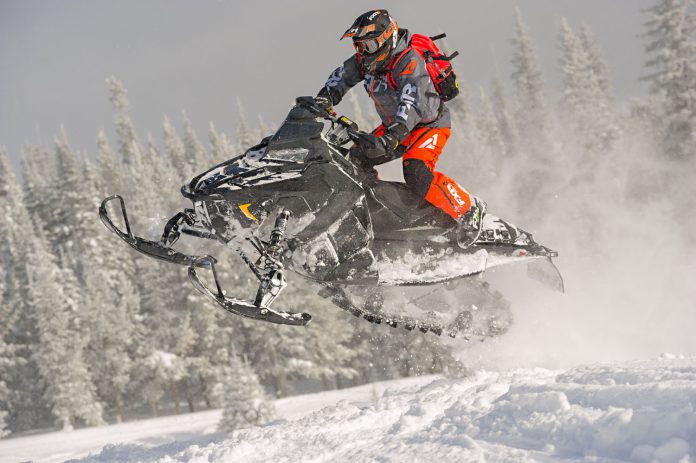Here’s a basic tips on setting up your suspension for maximum ride results. The idea here is to provide an understanding of where to start from when adjusting things.
Consider this: There are two elements of your suspension that you may or may not have control over: First is spring tension, second is shock damping.
SPRING TENSION
Your sled usually has either snail cam adjusters on each coilover shock or “progressive wind” threaded adjusters that can increase spring tension.
Torsion springs have a cam adjuster usually with no more than four settings. Winding up these adjusters has more to do with adjusting spring preload than changing the whole rate of the spring as it travels from full extension to full compression.
Preload is really only affected in the first couple of inches of travel and sets the static height of the snowmobile when it’s not moving but has its rider and cargo in place.
Generally, cranking up the preload will not make your sled ride stiffer. Those spring rates are set at the factory and they are what they are.
If you want a stiffer or softer ride as it pertains to springs, you’ll need to go to either the OEM or a spring expert and purchase springs with a different rate. Frankly, this is rarely necessary as factory spring rates are almost always within the ballpark.
When we set up a suspension on a stock sled, we like to start our adjustments with the preload backed off completely. In this way, we know we can add more preload when we get our shock damping adjusted properly.
SHOCK DAMPING
Shock damping is the most critical element of suspension tuning – provided you have springs that match rider and cargo weight. Many snowmobiles have no damping adjusters on their shocks and that sucks if you need ride improvement.
For the ones that do have adjusters (and definitely more sleds have damping adjustable shocks these days), you need to start by setting your damping adjusters to the softest setting.
Take the sled for a ride with the payload (including an extra rider if it’s a 2-up sled) you’d normally be carrying and determine where and when the suspension is bottoming-out.
Determine if you’re bottoming out at low speed – if you are, you’ll need to start adding more compression damping. Now speed up. If your low speed damping is good but you bottom out when you’re going faster, move the compression damping adjusters up one notch and test ride again.
Work on both front and rear of the machine at the same time and keep moving the damping adjusters at single increments until you’re satisfied. Do not go crazy and move your damping adjusters a bunch of notches at a time. This will only confuse things.
After you’ve got the compression damping set close to what you want, determine if you need to adjust front versus rear. If this is the case, only move the front or rear adjusters one notch at a time separately and then retest.
We’ve only talked about compression damping and have avoided rebound dampening adjustments – simply because fewer stock sleds offer both adjustments.
Yes, the testing process can be tedious and time consuming, but it’s definitely worth the work!



